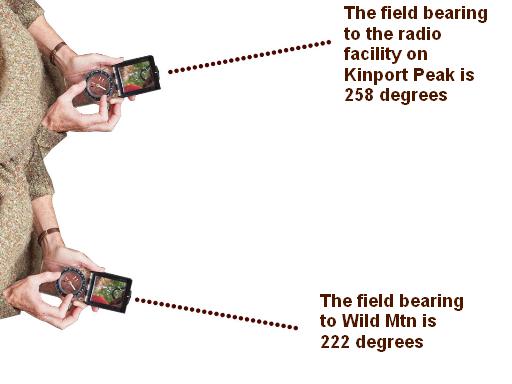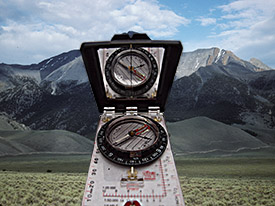
Applying a Field Bearing to the Map
Field to Map - 3rd Situation
By Ron Watters, Professor Emeritus of Outdoor Education, Idaho State University
This is the continuation of a several part series on compass use. If you haven't already, you'll want to start on the introductory page found here: Compass Technique. This page deals with a specific scenario when applying a field bearing to the map.
(Or, if you'd rather pick from a list of topics, you'll find it here: Topic Index.)
Field to Map (3rd Situation)
We have covered the first situation when applying a field bearing to the map, found here. And, we have covered the second situation when applying a field bearing to the map, found here. On this page, we'll look at the third situation:
3. We have no idea where we are (but we can identify at least two distant points)
We start by taking field bearings to each of the known points. Let's say that from our location we can identify Kinport Peak and Wild Mtn. We take field bearings to each:
Set 258 on your compass (the field bearing to Kinport Peak). Place the mirror edge of the compass (front edge if you don't have a mirrored compass) on Kinport Peak and rotate the compass so "N" (North) is at the top of the map and the parallel lines are vertical.
Make sure North is at the top and not South. When "N" is aligned properly and you've double checked to make sure the parallel lines are vertical, draw a line along the edge of the compass. You are located somewhere along the line.
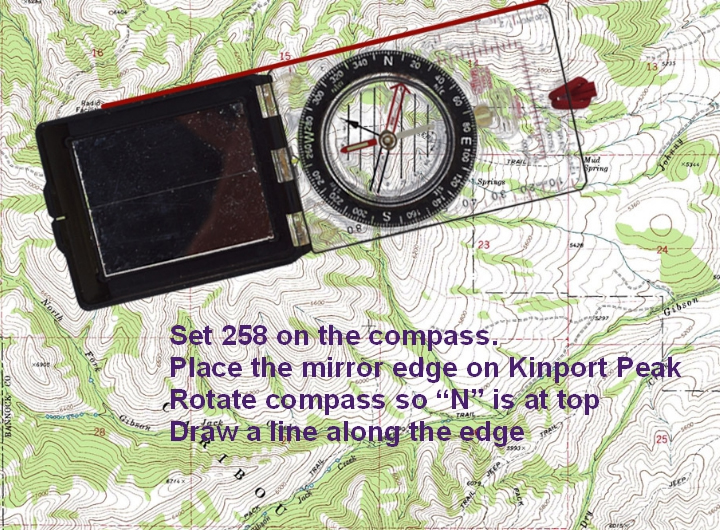
Now set 222 on your compass (the field bearing to Wild Mtn). Place the mirror edge of the compass (front edge if you don't have a mirrored compass) on Wild Mtn and rotate the compass so "N" (North) is at the top of the map and the parallel lines are vertical.
Again, make sure North is at the top and not South. When "N" is aligned properly and you've double checked to make sure the parallel lines are vertical, draw another line along the edge of the compass.
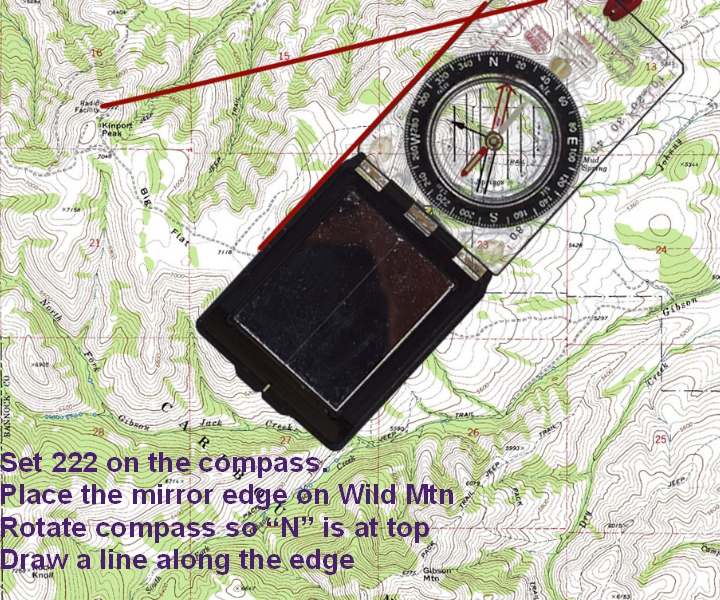
The intersection of the two lines is your location:
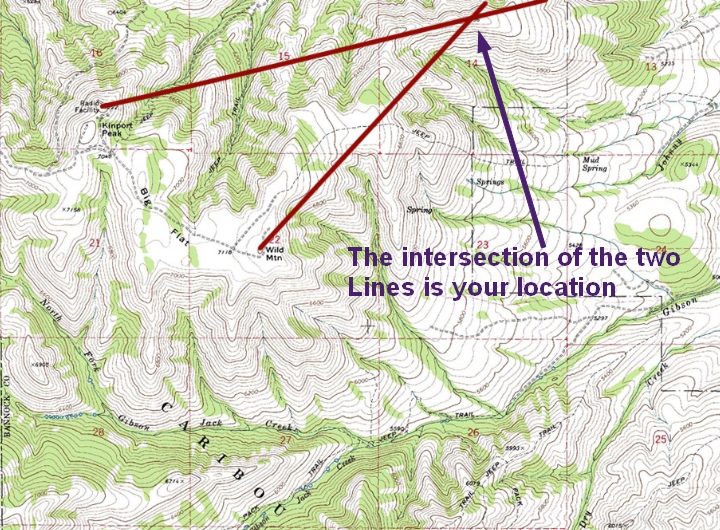
For a review of the use of a compass on a map and more information about making sure the parallel lines are vertical, see: Review and aligning Parallel Lines.
This is the last of the basic compass techniques.
A list of topics from this instructional series is found here: Topic Index.
[END]

